Building the Trellis, Part I
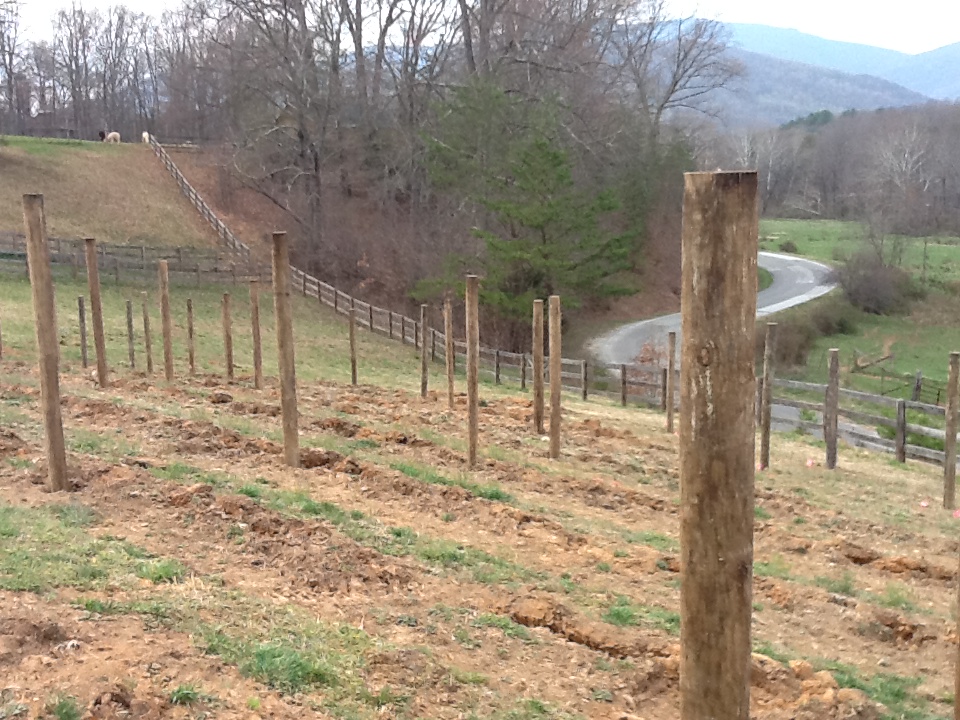
Here's how the vineyard looked last weekend, March 17. The posts are in the ground, the rows have been ripped, and it's beginning to look like a real vineyard! You can see our neighbors, the Alpacas, on the hill, top left.
How we built the trellis
Well, I have to be honest, I didn’t exactly build it myself. Much as I wanted to install the posts with my own hands, I ended up short on time with the planting season upon us. We needed to get the vines in the ground, pronto.
I’d spent much of the winter, between viticulture classes, my job and all of the work that goes into maintaining two separate properties, thinking about how to handle the trellis. There were moments when it seemed simple enough — eight foot posts put 24 to 30 inches into the ground, plus some kind of end-post system, which would be only slightly more complicated. And then, there were times when I wondered if I was up to the job.
As part of the planning, I did some research on what kind of equipment I’d need to buy or rent. A lot of the literature suggests that the best way to put posts into the ground is to pound them in, but the equipment involved would have made that impractical for me to do on my own. The easiest way to get the posts in is to drill the holes with an auger.
So, I briefly considered the idea of a hand-held power auger, which was the least expensive approach, or an auger for my tractor. I spent a lot of time visualizing the process, and considering whether it would be more cost-effective to do it myself or hire someone to do the work. I was pretty confident I could get the line posts in without a problem, but I spent a lot more time worrying about the end posts, which are more complicated. At some point, I began waking up at 4 a.m. to worry about how much work needed to be done and wonder if the vines we had ordered were destined to just, uh, rot on the vine? No, bad metaphor. Go to seed? mmmm…. no, that doesn’t work either. Wither and die? Well, something like that.
Eventually, we passed the point where I could reasonably expect that it would be Continue Reading–>
Dormant Winter Pruning — and other Vineyard Considerations
After a long winter that sometimes seemed like it would never end, spring planting is just around the corner. And despite all the time we had to prepare for the new season, we are now feeling not quite as ready as we’d like to be.
We’ve ordered 150 vines –50 Petit Verdot, 50 Cab Franc, 25 Viognier and 25 Petit Manseng – and lately I’ve been waking up in the middle of the night wondering if we’ll have everything in place in time to plant. I’m still worried, but we’ve made enough progress lately, especially this weekend, that I’m feeling a bit better about the whole enterprise.
Our biggest concern is the trellis. If you’ve followed our progress through this blog, you’ll note that I didn’t worry about that last Spring when we planted 14 vines, split between our Fairfax and Nelson county properties, but that was different on a couple of counts. First, those vines were more for our education than for the eventual production of wine. And we’ve learned a lot from taking care of those vines. Wine in two years would be a bonus, but it wasn’t the goal when we planted them. The second reason I didn’t obsess over the trellis is that I didn’t expect those vines to reach the height of the first wire in that initial year. And since there are so few Continue Reading–>
Every Grape is Different — Notes from a Vineyard Conference
The Virginia Vineyards Association brings together commercial grape growers, hobbyists and others with an interest in viticulture, and its efforts to promote cooperation and the exchange of information is one of the reasons that the Commonwealth’s wine gets better every year. I believe, and I think most of the growers who participated in the association’s technical meeting in Charlottesville last week would agree, that the reputation of Virginia wine is influenced by every bottle that’s sold. If someone has a bad experience the first time they taste a Virginia wine, they may never try another. So all of us have a vested interest in doing what we can to help each other make the best wine possible.
Another reason for the success of the Virginia wine industry is the work that’s being done at Virginia Tech by folks like Tony Wolf, Bruce Zoecklein, and Mizuho Nita, all of whom played major roles at the meeting. Tony Wolf’s book, Wine Grape Production Guide for Eastern North America, has become our bible as we move toward planting a small hobby vineyard, and Mizuho Nita’s blog is the indispensible guide to grape disease management.
However, this was my first encounter with Dr. Zoecklein, and I’m hopeful now that it won’t be my last. Dr. Zoecklein has written the book (actually, at least four books and too many articles to count) on wine chemistry, and he manages to make the chemistry both accessible and practical for people like me. And since this was a class on “Sensory Evaluation for Grape Growers,” he taught the class through the tastes and aromas of seven separate wines, which we tasted blind throughout the class. Continue Reading–>
Five Vintages of Cab Franc at Gadino Cellars
As I’ve said before, I believe that Cabernet Franc is Virginia’s signature red grape, even if Petit Verdot iscoming on strong. It is more cold-hardy than Merlot or Cabernet Sauvignon, and it ripens earlier. That’s important in Virginia, which can be prone to early frost, Fall rains, and the occasional harsh winter. And Cab Franc is a wonderful grape on its own. It has softer tannins than Cab Sauv, and while it might not be quite as age-worthy, wines today are being made (and
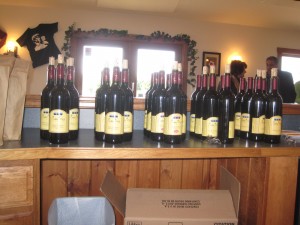
- Five Vintages of Cab Franc waiting to be poured, along with a mystery wine, hidden in brown bags for blind tasting
purchased) for early drinking, not for years in the cellar. Cab Franc will age, of course, but it is also more accessible when young than the more tannic reds. And Cab Franc can be used on its own or as a blend to make wines with great complexity, as the great St. Emilion blend, Cheval Blanc, demonstrates.
Cab Frank is particularly important to my wife, the Vineyard Goddess, and me, because it’s one of three grapes we will be planting this Spring, the other two being Petit Verdot and Viognier. (We had hoped to plant Petit Manseng as well, but couldn’t find the certified vines we wanted.)
So, I was thrilled to have the opportunity Saturday to participate in a vertical tasting of Cab Francs at Gadino Cellars in Washington, VA (Rappahannock County). We tasted wines from 2005, 2006, 2007, 2008, and 2009, plus a barrel sample of the 2011. The Gadinos threw in a mystery wine, which we tasted blind. More on the mystery wine later. Continue Reading–>
The Year of the Sorting Table
Following up on my last blog, which concerned Cab Franc, Tim Mondavi, and the 2011 vintage in Virginia, among other things, I just read Emily Pelton’s article on the 2011 harvest in Grape Press, the publication of the Virginia Vineyards Association, and I am somewhat more hopeful about this vintage.
First, some introductions. Emily Pelton is the winemaker extraordinaire at her family’s
vineyard in Nelson County, Veritas Vineyard and Winery. And the Virginia Vineyards Association is the indispensable organization for anyone in the Commonwealth interested in viticulture and winemaking. The November issue of the Grape Press was one of the best I've read. In fact, I think I read every word, from beginning to end, and it was all good.
In any event, I spent part of my last post lamenting the difficult weather conditions, particularly the abundant rain that created all kinds of problems in the vineyard. One of the difficult decisions that winemakers and vineyard managers make as harvest approaches is how willinging they are to gamble on the weather. If rain is in the forecast, do you hold out a little longer, hoping the grapes will achieve the perfect balance of sugar and acidity, or do you pick early, sacrificing a bit of brix for the certainty that you will at least have a harvest? Continue Reading–>
Tim Mondavi and Cabernet Franc
We’ve been pretty sure for a while now that Cabernet Franc was a good bet for our small vineyard. It’s a wonderful grape for blending, often used to soften the harsh tannins in its close cousin, Cabernet Sauvignon, and it is lovely on its own as a varietal. And we’ve tasted it at enough wineries in enough different parts of the state to believe that it’s well suited to the growing conditions found in Virginia.
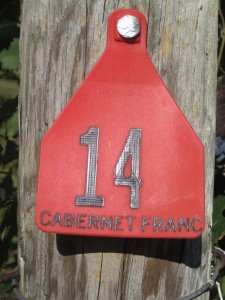 It is (usually) the dominant grape in Cheval Blanc, one of the great wines of Bordeaux. It is not a first growth, since Saint-Emilion was not included in the 1855 classification, but in the 1955 Saint-Emilion classification, it was one of two ones to be ranked as a "Premiers Grands Crus Classés A." And, of course, the 1961 Cheval Blanc was the wine that Miles had hidden away for a special occasion in Sideways. (He drank it from a paper cup at the end while at a McDonalds, since his love interest had told him that — and I'm paraphrasing from memory — any time you drink a Cheval Blanc, it's a special occasion.)
It is (usually) the dominant grape in Cheval Blanc, one of the great wines of Bordeaux. It is not a first growth, since Saint-Emilion was not included in the 1855 classification, but in the 1955 Saint-Emilion classification, it was one of two ones to be ranked as a "Premiers Grands Crus Classés A." And, of course, the 1961 Cheval Blanc was the wine that Miles had hidden away for a special occasion in Sideways. (He drank it from a paper cup at the end while at a McDonalds, since his love interest had told him that — and I'm paraphrasing from memory — any time you drink a Cheval Blanc, it's a special occasion.)
For those of you willing to spend upwards of $1,000 a bottle (and more) on a Cheval Blanc, I have no doubt you will feel the money well spent. But if you do, then don’t hesitate to invite me to share it with you. I’ve never tasted Cheval Blanc, but I’ve certainly lusted over the thought.
However, if you are among the 99 – make that the 99.9 – who can’t afford Cheval Blanc, you should think about a Virginia wine that is either entirely Cab Franc or included as the dominant grape in a blend. Almost every winery in Virginia seems to have a Cab Franc in its tasting room, and many of them are splendid.
But while we’re sold on Cab Franc, it’s always nice to hear that others feel the same way. In the Nov. 15 issue of The Wine Spectator, a lengthy article on Tim Mondavi includes a sidebar (The Francophile in Continuum,) that highlights this great winemaker's love for Cab Franc.
"The wines that had the highest percentage of Cabernet Franc were the wines I loved the most," says Tim. "When I would be looking at the wines in barrel, I found there was a higher perfume [in Franc] that was very different from Cabernet Sauvignon. It also adds viscosity and suppleness you can't find with Cabernet Sauvignon or Merlot."
Franc does need to be ripe, the Wine Spectator adds. “Otherwise it can be herbal, stalky and coarse.”
That’s precisely the problem that some identify in Virgina reds – vegetal flavors, usually produced by a compound known as methoxypyrazine that comes from grapes that are not quite ripe. The risk is especially pronounced in areas with short growing seasons or in years when rain or other conditions force an early harvest. Done right, Cab Franc can be wonderful, in Virginia wines as well as in Mondavi’s Continuum.
In another four years, after the vines have matured, the grapes have been picked and fermented, and the wine has been in the bottle for a suitable period of time, I’ll be able to tell you how well it worked out.
A night in the Vineyard — with Snow
Before explaing why we found outselves in the vineyard late last night with the snow coming down, let me give you a little background, which hopefully will assure you that we are not crazy. Not completely, anyhow.
In my last post, I talked about the importance of weather in vineyard management. Obviously weather is a factor in all things agricultural – there’s not a farmer in the world who doesn’t keep at least one eye on the sky throughout the growing season – but it raises very specific and difficult issues when it comes to viticulture. Vines, after all, aren’t annual crops. It takes three or more years to bring vines to the point where a crop can be harvested, and they can be be expected to bear fruit for decades after that, which means they must be nurtured through hot, humid summers and cold winters.
I also talked about the importance of site selection in my last post, and it turns out that many of the issues in selecting a vineyard property boil down to coping with weather.
For example, a late frost can cost you an entire growing season. No grapes, no wine, and (if this is your business), no money – although you’ll still have to undergo the expense of caring for the vines throughout the growing season And a serious winter freeze – one in which temperatures drop well below zero – can cost you the entire vineyard. That’s why wine-grape growers in Virginia look for property with an appropriate elevation. In much of the area east of the Blue Ridge Mountains, elevations above 800 feet are highly desirable, since they bring you into a sweet spot of a thermocline where warmer air is trapped. Optimal elevations, those within a thermal belt or thermocline, vary by region. In our area (the Monticello AVA), I believe that elevations of 800 to 1500 feet above sea level (ASL) are optimal. Any higher or lower and you risk problems from frosts and freezes. Continue Reading–>
Finding the Perfect Spot to Plant Vines
It’s hard to imagine anything more important to the establishment of a great vineyard than the selection of the right piece of land, yet hardly any step gets less attention from home vintners. That’s because most of us use the land we already have. And even those of us who search for a property with a vineyard in mind sometimes give less than full attention to the site’s suitability for growing wine grapes.
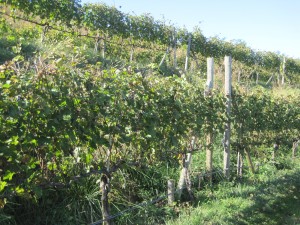
- Slopes are good for vineyards, but this is almost too much. Try getting your tractor across it without tipping.
I can attest to that. Before buying our Nelson County home, we looked at something on the order of 45 properties. Initially we set our parameters at five acres or more, preferably 10. We excluded properties that were wooded (“private” in real-estate speak), and those that were at too low an elevation to provide safety from winter freezes. We wanted slope, we wanted an eastern aspect, we wanted land that was so infertile that a farmer would turn his nose up at it. (Bad soil is ideal for wine grape production, but that’s a story for another post.)
And in the end, we bought a property that was only three acres, with a western aspect and tall trees on the eastern border that would limit sunlight in the morning. So what in the name of all that’s holy were we thinking?
Well, this is the home we plan to retire to in a few years, and we pretty much just fell in love with it. It’s a great house with beautiful mountain views. And it does have a few things going for it as a vineyard property: slope (almost too much slope), really crappy soil, good drainage, and a small section at the western end that we believe will get sufficient sunlight for grape production. Continue Reading–>
Bringing in the Grapes — Part V
Readers of ProjectSunlight have noted a recurring theme over the past month. The weather, at least insofar as vineyard mangers in Virginia are concerned, really sucked this year.
It may be small comfort to the Commonwealth’s vignerons, but the weather has generally sucked worldwide. Jancis Robinson, in her Financial Times column last weekend, detailed the carnage in California and Europe, and even in the Southern Hemisphere, where the growing season is reversed.
“If Europe’s vintners have found 2011 much more trying than any other recent vintage, six months earlier, while picking their 2011s, the Australians experienced the vintage from hell,” she wrote. “Harvest time in the supposedly sunny wine state of South Australia was sodden. Winemakers have had to work extremely hard in some areas to fashion drinkable wine out of bloated, rotten grapes.”
And it goes beyond Australia. “The vintage in New Zealand was bloated too, thanks to frenzied recent planting of vines there, fuelled by a belief that the world is in love with Kiwi Sauvignon Blanc,” she added. “Argentine growers were also afflicted by rain at harvest time in 2011, as well as the usual hail, and unusually late frost in November last year.”
So, weather-related problems span the globe. As I’ve noted before, that’s the way it is with agriculture. You really have no control over the weather, although you can compensate to some extent – to a great extent in normal years, less so in years like 2011 – with a disciplined spraying program.
And winemakers can exert some magic of their own once the grapes come in. This year will be difficult for sure, and none of the winemakers I’ve spoken to have any illusions about the challenges ahead of them. This vintage will definitely separate the men from the boys, so to speak, and show, as Ms. Robinson said, “who exactly are those master craftsmen.”


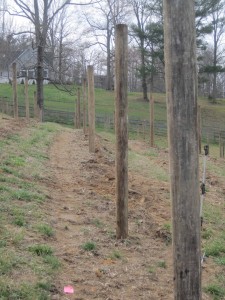
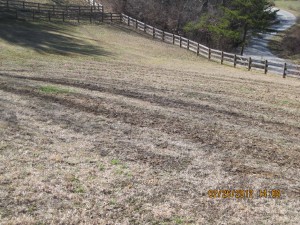

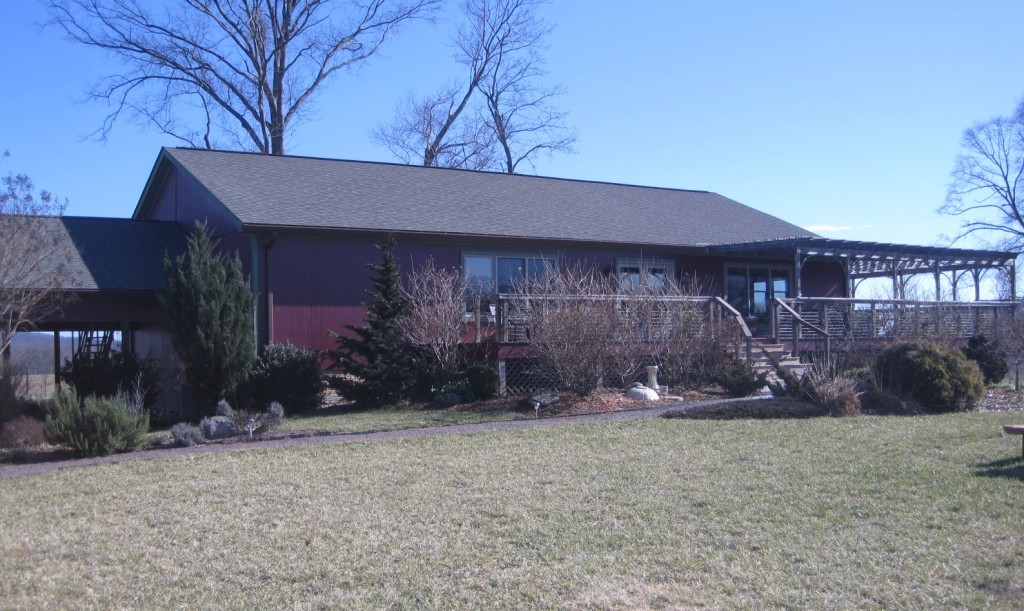
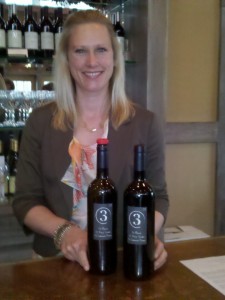
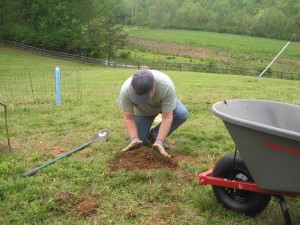
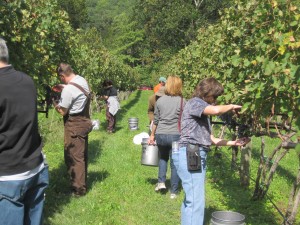

Recent Comments